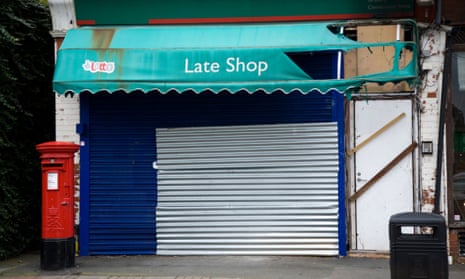Here’s two contradictory datasets: one from the Citizens Advice Bureau, reporting that 600,000 more people are falling into ruinous debt, unable to pay their energy bills; the other from the UK Insolvency Service revealing that individual bankruptcies and ‘debt relief orders’ have fallen over the last year, and dramatically so. Yet both paint an accurate picture of debt in the UK during the pandemic.
The insolvency figures are extraordinary. The number of personal bankruptcies this year – a period of forced business closures, furloughs, rising unemployment – has dropped to the lowest level for a decade. They are running at just one-sixth the level common in 2010. Individual voluntary arrangements (IVAs) are up, but only marginally, rising around 3% compared to with last year.
Yet the CAB is telling us that Covid has driven over half a million people into the red on energy bills and (especially if it’s a cold winter) seven million households are worrying about how they are going to pay their heating bills. Meanwhile unemployment is soaring and rental arrears worsening.
Two things explain the contradictions. Firstly, the courts system seized up as the pandemic took hold; then the number of applications forcing someone into bankruptcy fell as various Covid-inspired initiatives reduced proceedings to a trickle.
Second, and encouragingly, a broad system of support emerged. The CAB – not usually shy about bashing the big utility providers – found that 59% of people in financial difficulty who spoke to their supplier said the support options they were offered were helpful – just 16% disagreed.
But the great reckoning is to come. History tells us that there is typically an 18 month to two year time lag after a crisis before the proverbial rug gets pulled. The various moratoria on proceedings will end, some sooner than later; for tenants, the ban on eviction notices being served ends on 11 January.
The UK’s all-time high for individual insolvencies was in the last quarter of 2009, two years after the great financial crash first hit. Expect that record – and many people’s lives – to be shattered some time in 2022.
Ending the UK furlough scheme early was a disastrously flawed policy
Flexibility is a virtue in Rishi Sunak’s Treasury. It allows the government to stay nimble and responsive to changing needs as it seeks to combat the pandemic and keep the economy moving.
But while keeping billions of pounds in reserve during troubled times might serve the City hedge fund manager that Sunak used to be, the unemployment figures for October showed it was a deeply flawed position when confronting a deadly virus outbreak and one that contributed to higher job losses than might otherwise have materialised.
It is clear that companies shed workers in the belief that the Treasury would stick to its guns and end the furlough scheme as scheduled in November. Sunak said the move was all part of a switch to a scaled-back system of support that put an emphasis on retraining the jobless.
With legal obligations to meet concerning notice periods and consultation, firms had little option but to consider terminating employment contracts before the deadline.
Little did they know that the chancellor was biding his time, waiting to see if the second lockdown was going to be imposed. This was the lockdown that countless health professionals said back in the summer was coming after the virus began to gather strength.
Not long after the pandemic struck, the French and German governments promised businesses and households that state support would stretch into 2021 and remain in place until the effects of the virus had waned.
The Treasury’s tactical approach meant a similar commitment was ruled out, until it was too late for some.
We cannot know how many of the 370,000 redundancies during the three months to October, most of them from the retail and hospitality industries, might have been saved. It is fair to say, quite a few.
